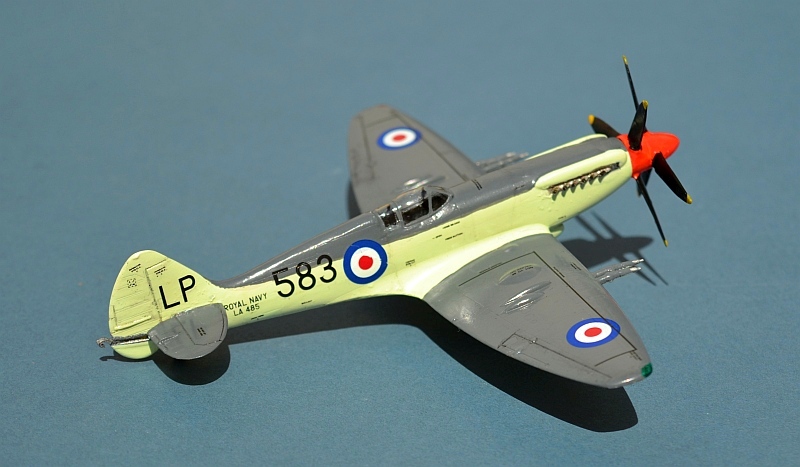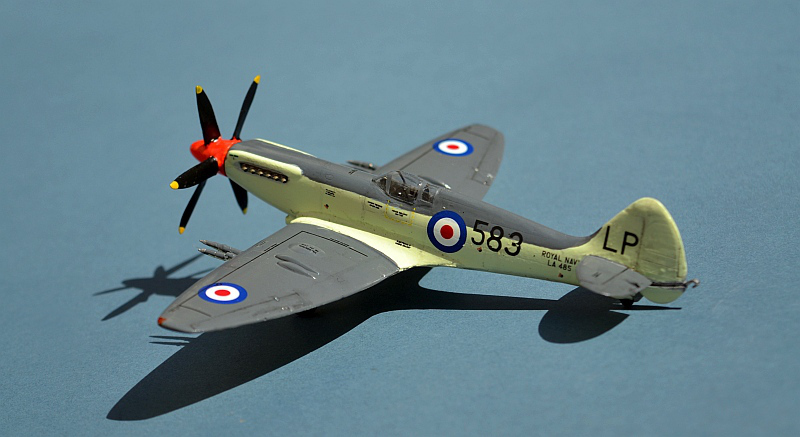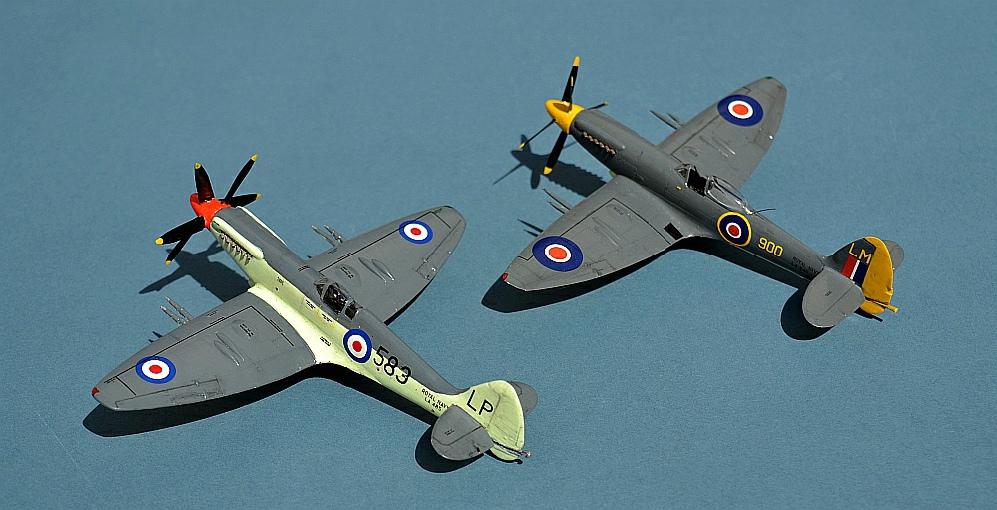July 2018
Supermarine Seafire 45
Supermarine Seafire 45
771 Sqn Fleet Air Arm, RNAS Lee on Solent, 1949.
Czech Master Resin (CMR) 1/72
The Seafire 45 was the naval equivalent of the Spitfire Mk.21. Embodying the larger engine and laminar flow wing, as well as the enlarged tail surfaces from the Spiteful/Seafang design. It retained the traditional canopy and fuselage hump, but did not have folding wings, limiting its deployability at sea.
Despite the thinner wing and more powerful engine, its advantage over the Spitfire
17 seemed marginal and it was a far less stable aircraft. Only 25 were built and
used mainly for trials and development work by 771 Sqn, including the fitment of
a contra-

© www.gengriz.co.uk
Background Picture and below -
Slightly more mobile than last month, but still mainly modelling on the coffee table from the sofa, or sitting on the floor for detail work.
This has been a really difficult and slow build, but I got there in the end !
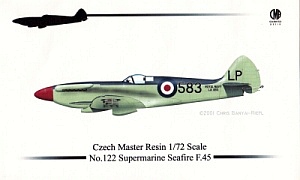
At the point when I purchased this model, it was the only show in town for a Seafire 45 and commanded the typically high prices expected of CMR’s premium quality resin kits. Since then, a number of 1/72 injection moulded kits have appeared from the likes of Special Hobby, Admiral and Legato, all at more reasonable prices, but apparently each with their own problems.
However, I can honestly say that this has been the most challenging kit build I have undertaken in decades. This is not my first resin kit by far and CMR’s resin kits really are highly regarded, but I almost gave up, something I have never done in nearly 50 years of modelling.
The kit comes in a set of sealed plastic pouches with a card insert and is finely
moulded with superb surface detail; the shape also looks good to me and first impressions
were very good. I acquired this one quite a few years ago for less than £10. They
currently retail for nearly £30 and if I had known what I was taking on, it would
have gone straight onto e-
In fairness, fit of the major parts wasn’t bad, but still includes many of the problems typical of older Spitfire/Seafire kits. Comparison with last month’s Airfix F.22 really was illuminating and very much in the favour of Airfix; the CMR underwing rear joint has a large gap, the wing to fuselage joints have large gaps on both sides and the front wing/fuselage joint is a fair fit, but almost impossible to smooth out the joint gaps afterward.
The biggest issue for me though, was the resin. Very soft but brittle, it seemed impossible to get the superglue to stick to it. I hate superglue at the best of times, but this is by far the worst experience I have had. It also flaked when sanded (even gently), making it difficult to get a smooth surface.
Even when I got it to take on the two fuselage halves, (leaving overnight to cure), it then sprung apart several days later. I even resorted to flooding the fuselage with glue after it had set, to try and provide some extra strength. And it sprung apart again. The cockpit parts were inserted from beneath once the fuselage was fixed; I couldn’t find any other way to make them stick!
Disappointingly, the two fuselage halves were slightly different sizes at the rear ends – I addressed this by sanding the larger to meet the smaller, but the resin was very difficult to sand smoothly. The radiator internal parts were also different sizes, although this is not easy to see once complete and the tailplanes are smaller than those on the Airfix Mk.22 Spitfire, which is a little suspicious. I had particular difficulties getting the propeller blades together – although they look good in the bag,, the attaching lugs are so thin that they would be an issue in polystyrene, never mind in brittle resin.
Interestingly, my Seafire references suggest that neither of the supplied decal options
were actually fitted with contra-
Decals are good (I had already used some of them to help out with my Seafire 17), but a little brittle. Unfortunately they don’t include the sky borders on the top parts of the side numbers, despite the prominence of this on the kit’s supplied colour profile
The canopy is also a reasonable fit, although it seems a little small for the kit.
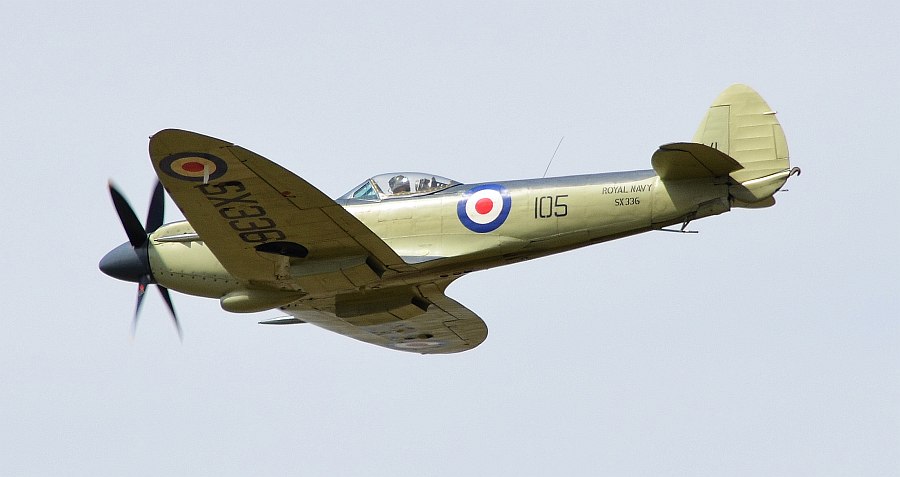
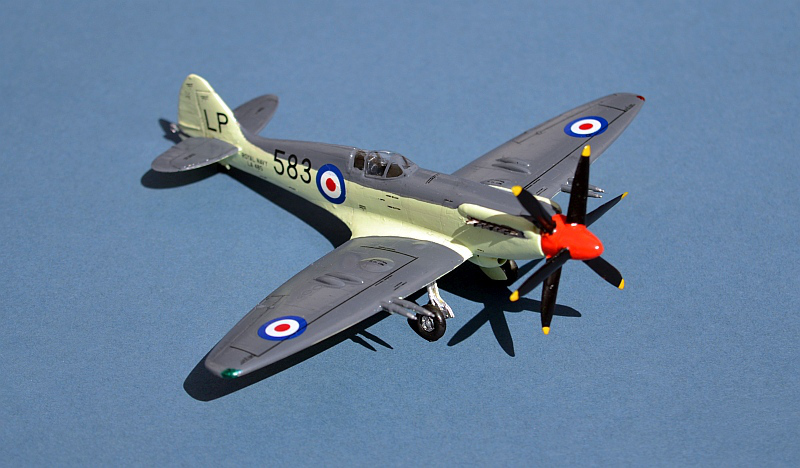
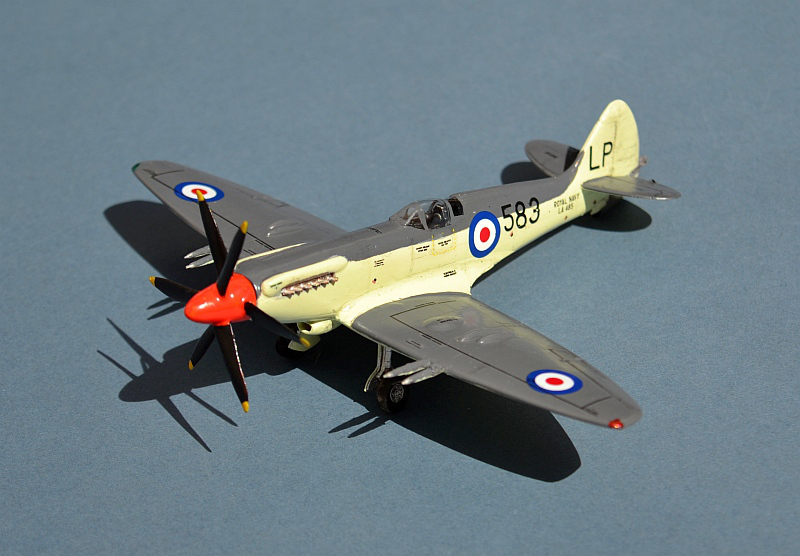

So, my frustration with this kit is probably quite clear. That said, completing
it from my sick-
But if you really want a Seafire 45 in your collection then trust me, an injection moulded one is a better bet if you want to retain your sanity.
